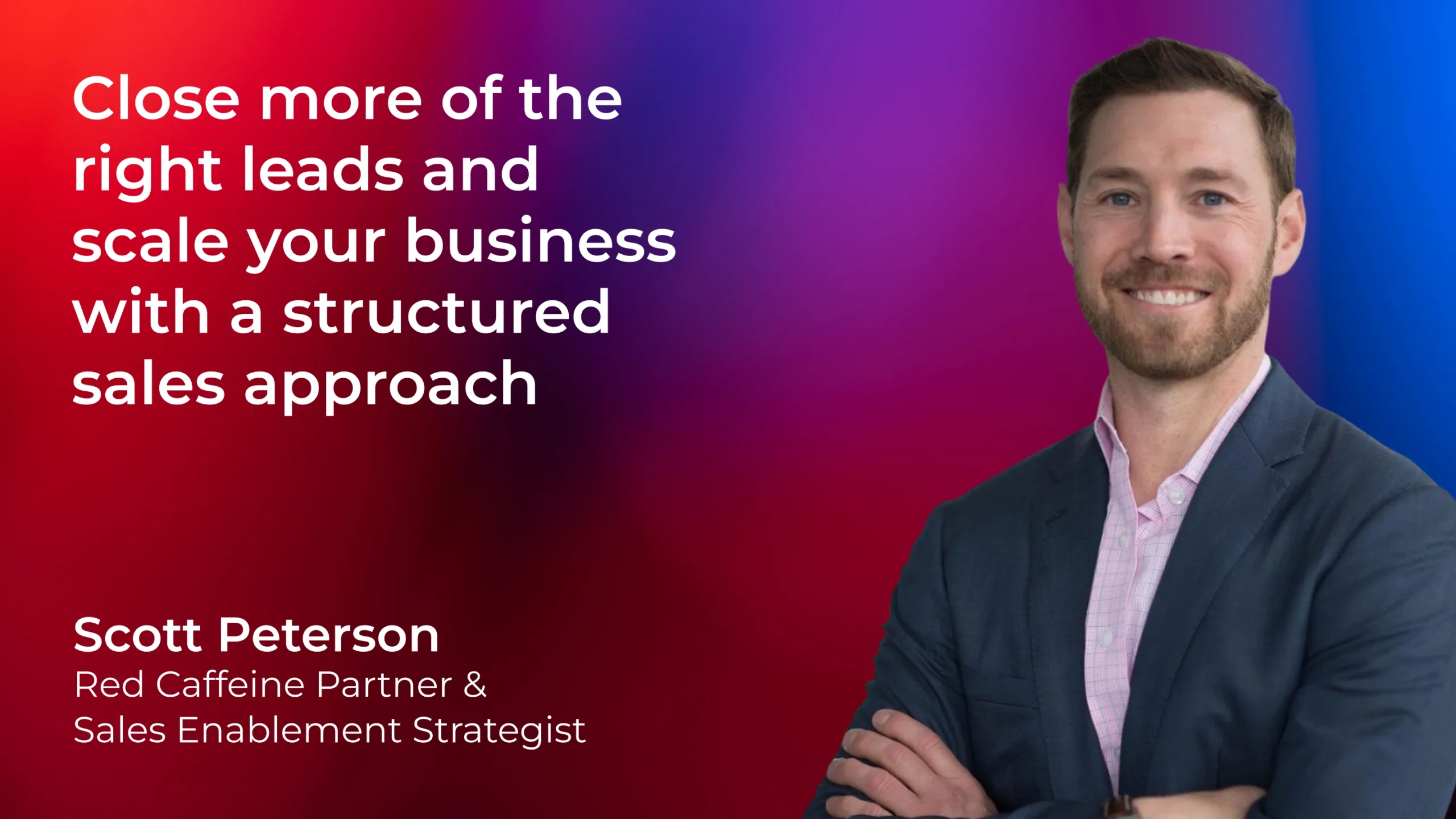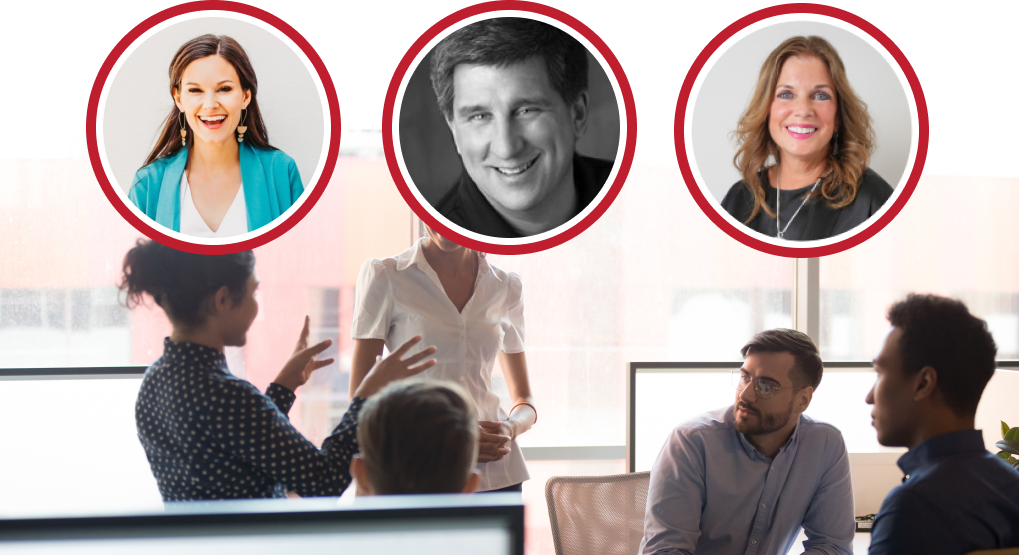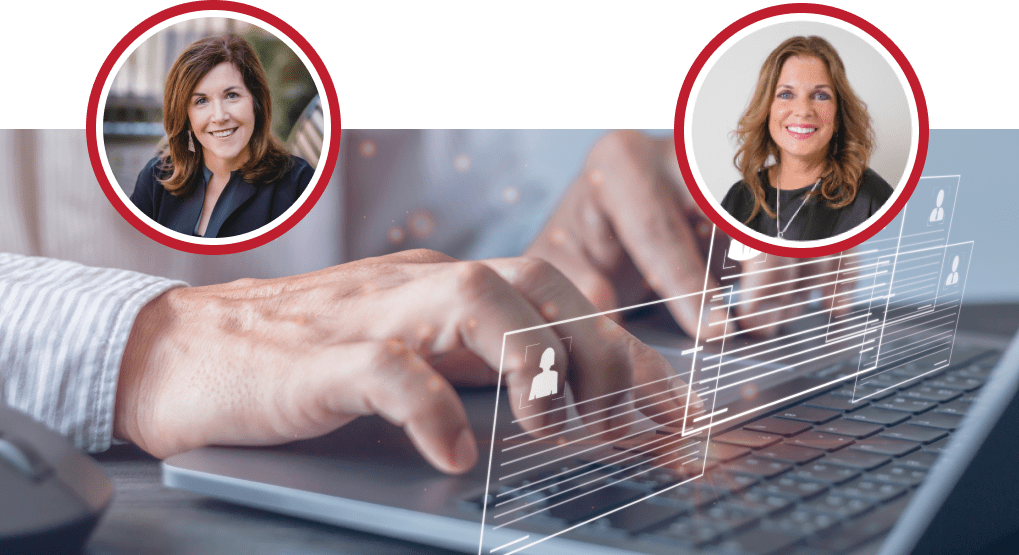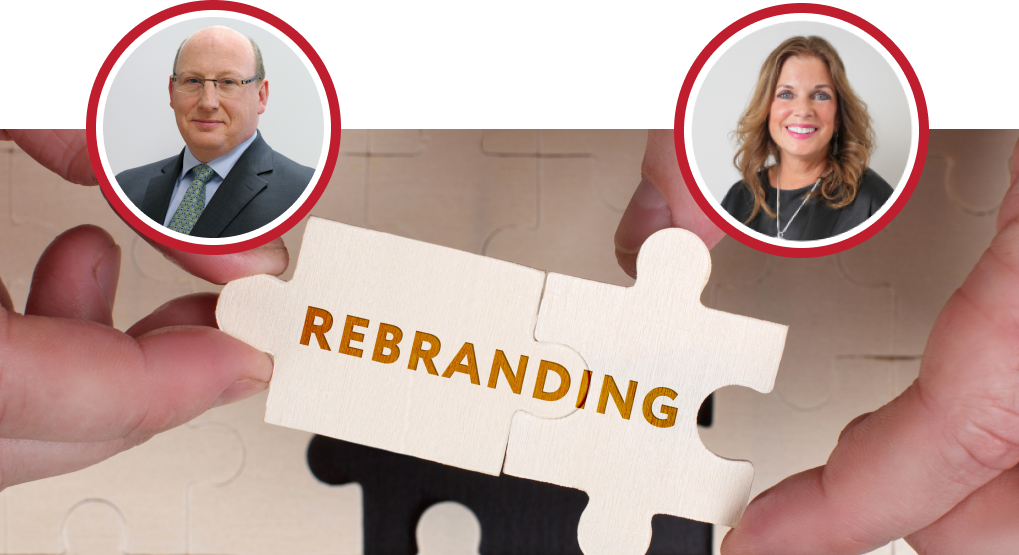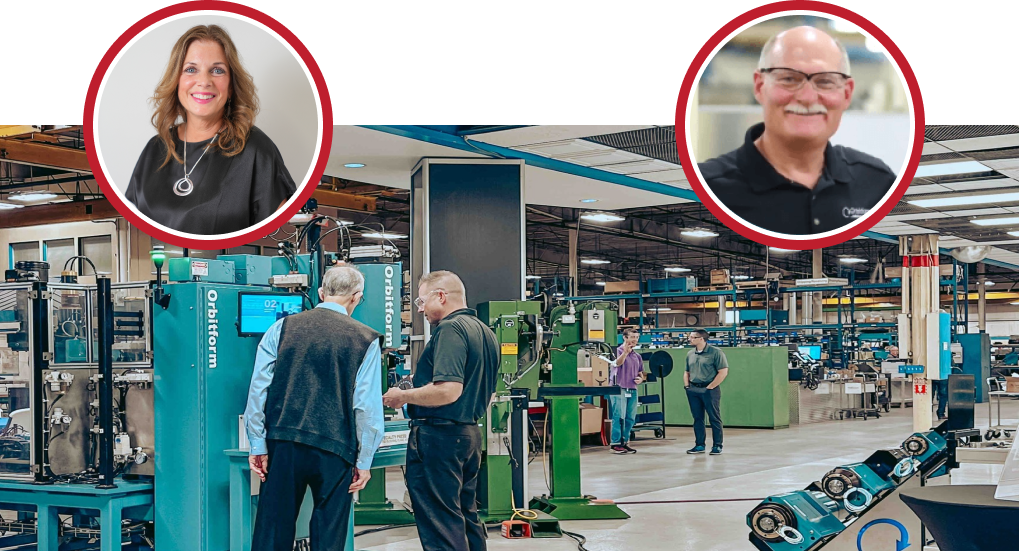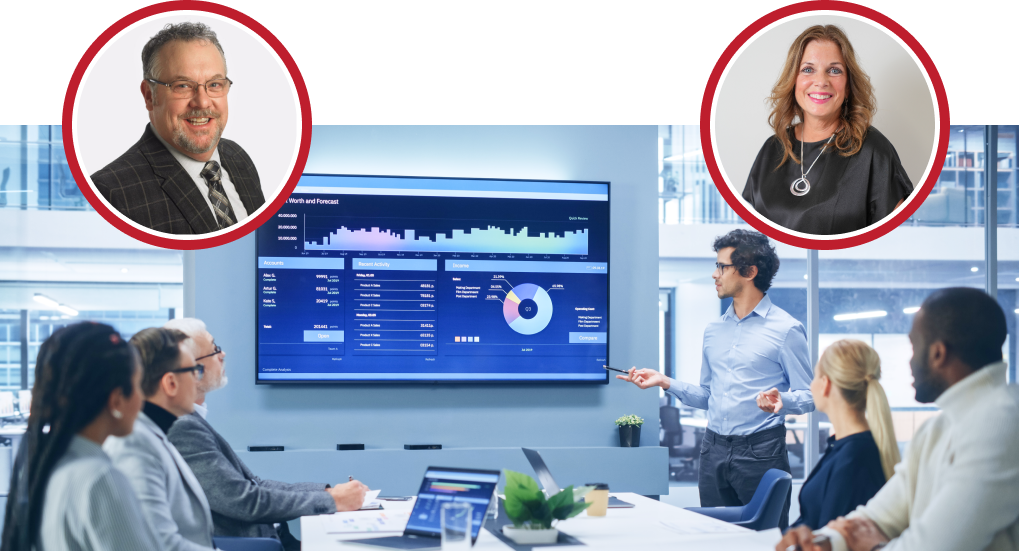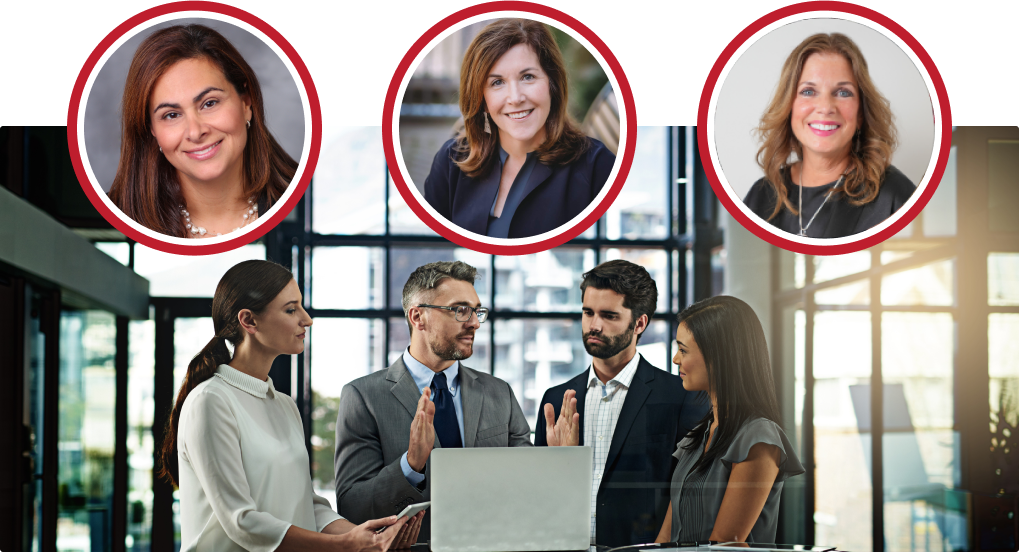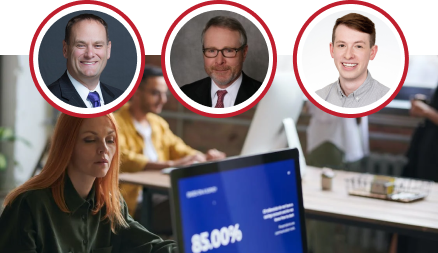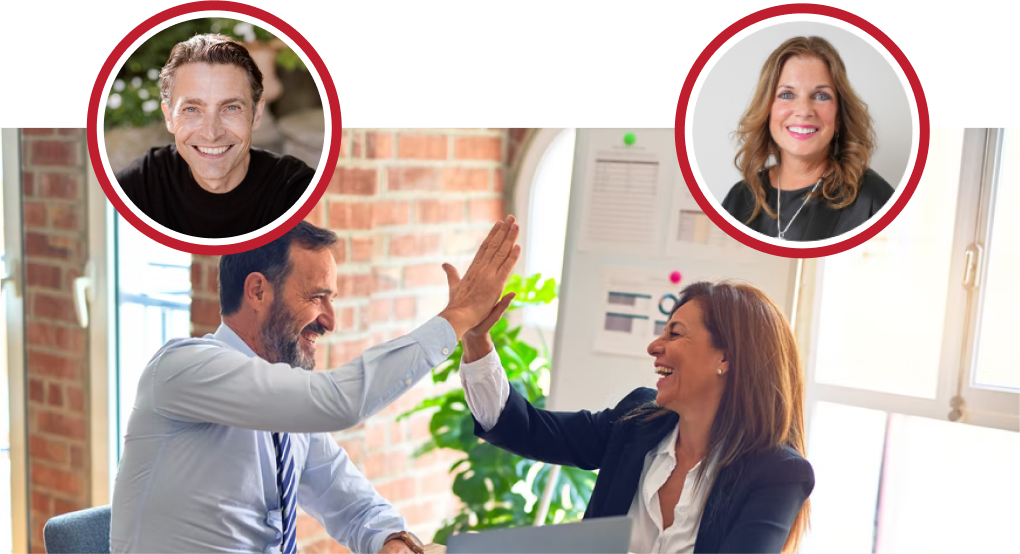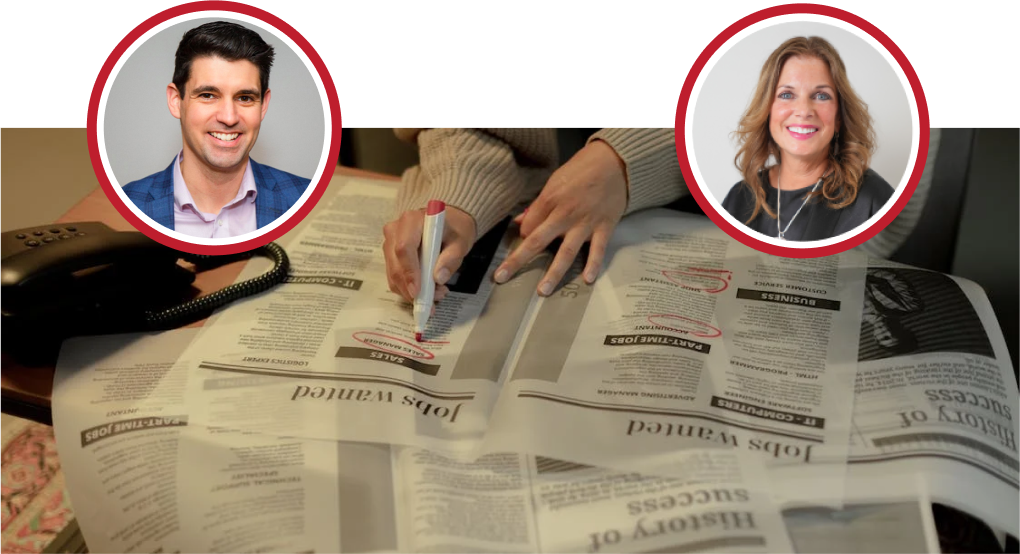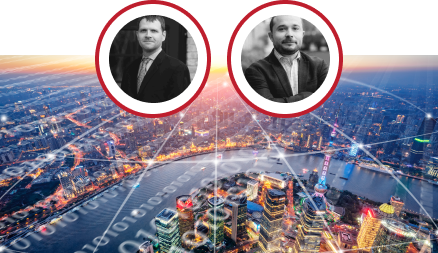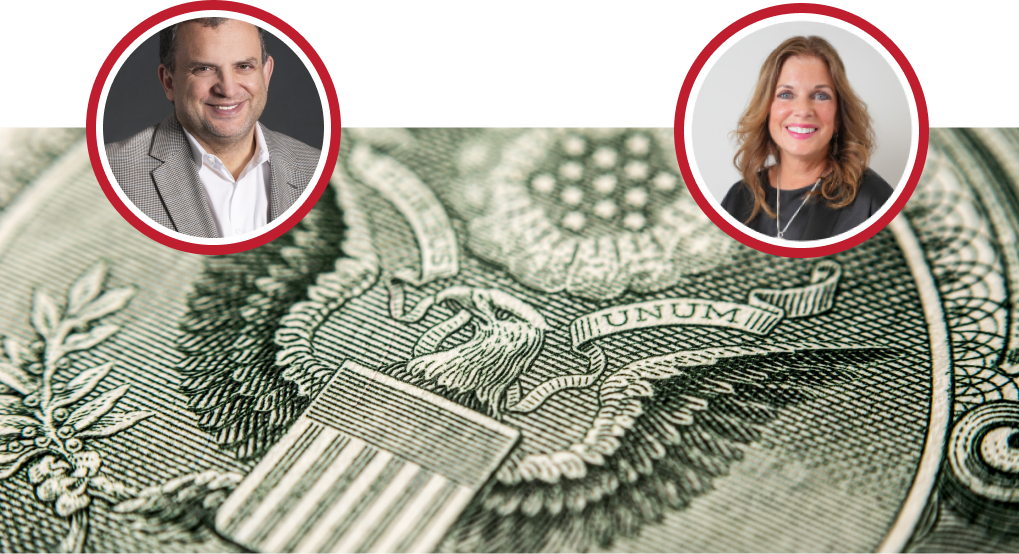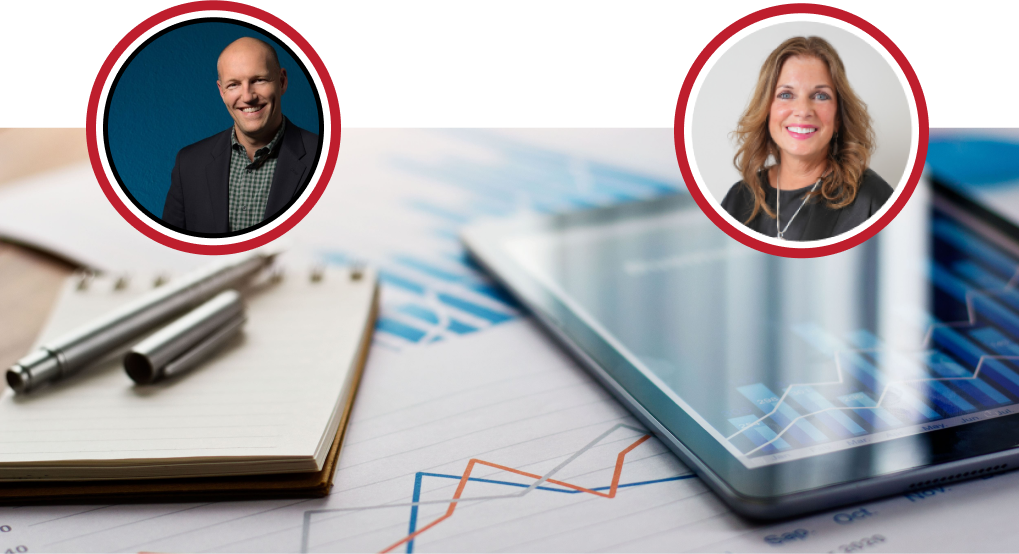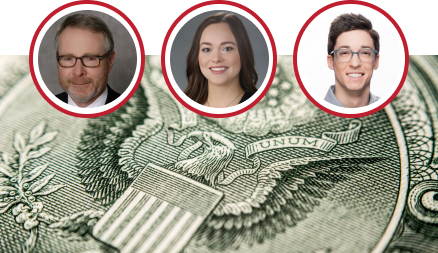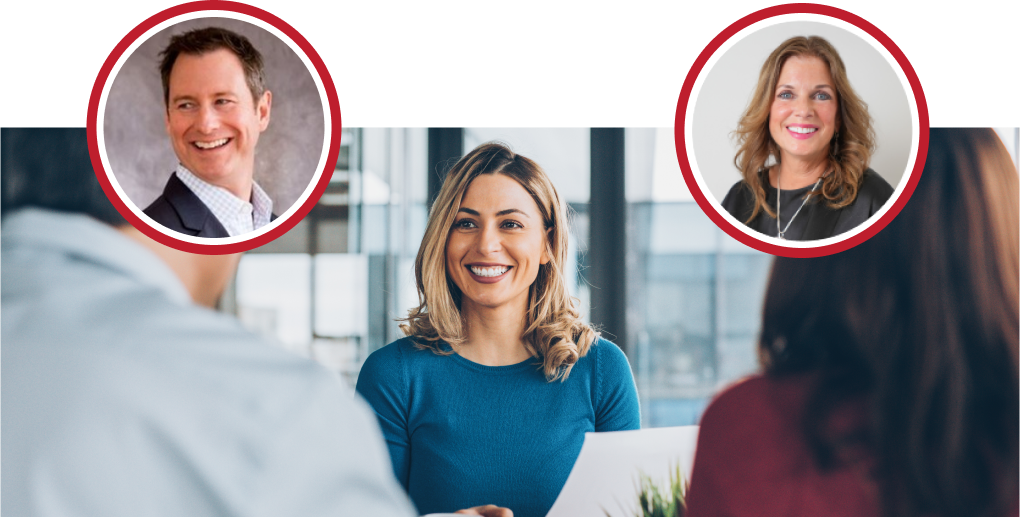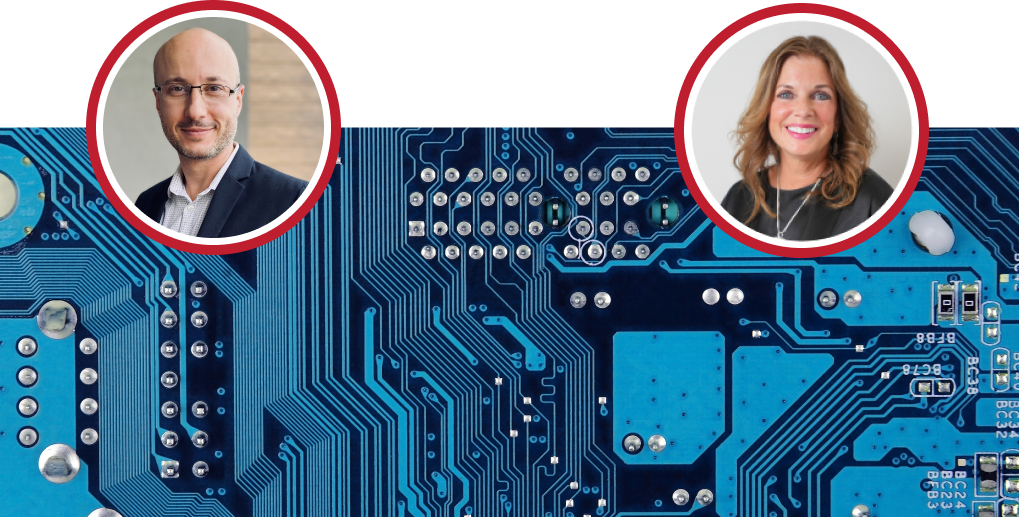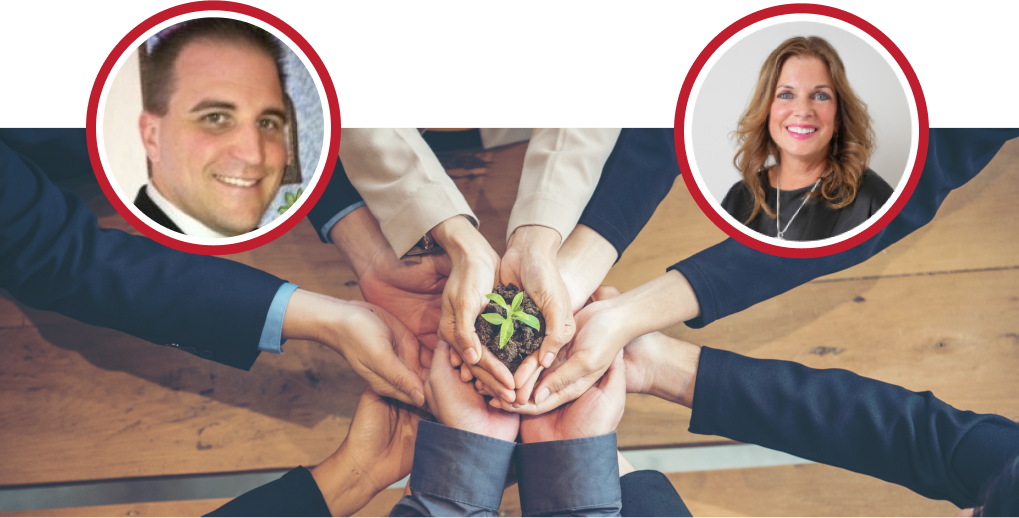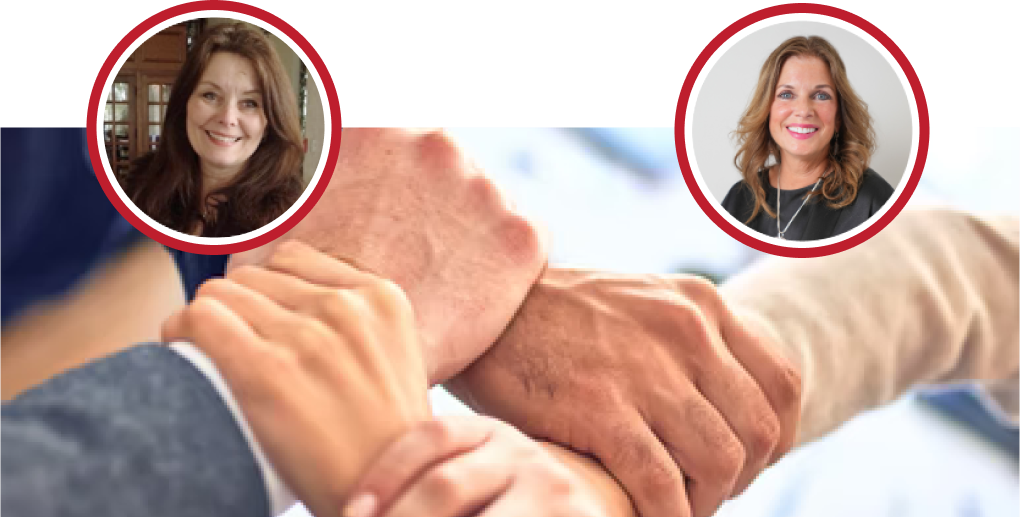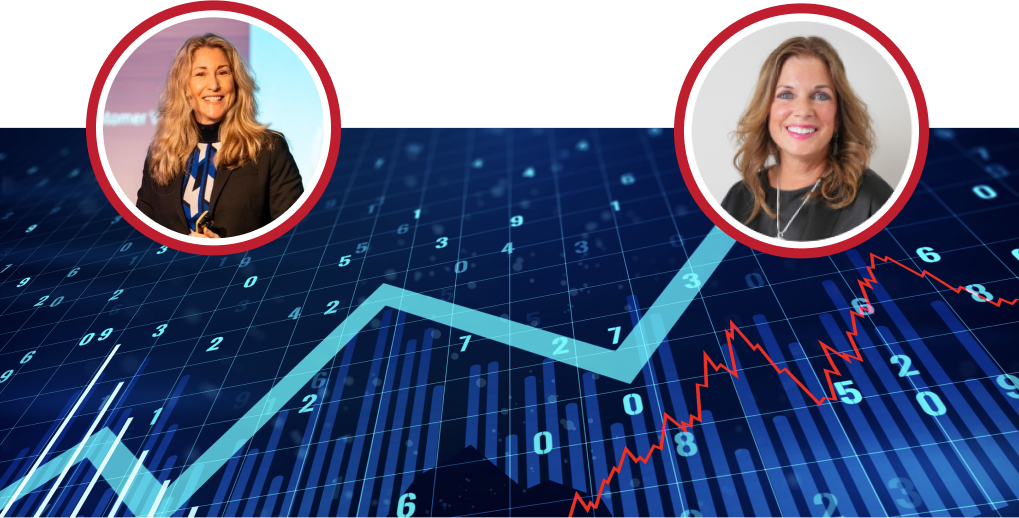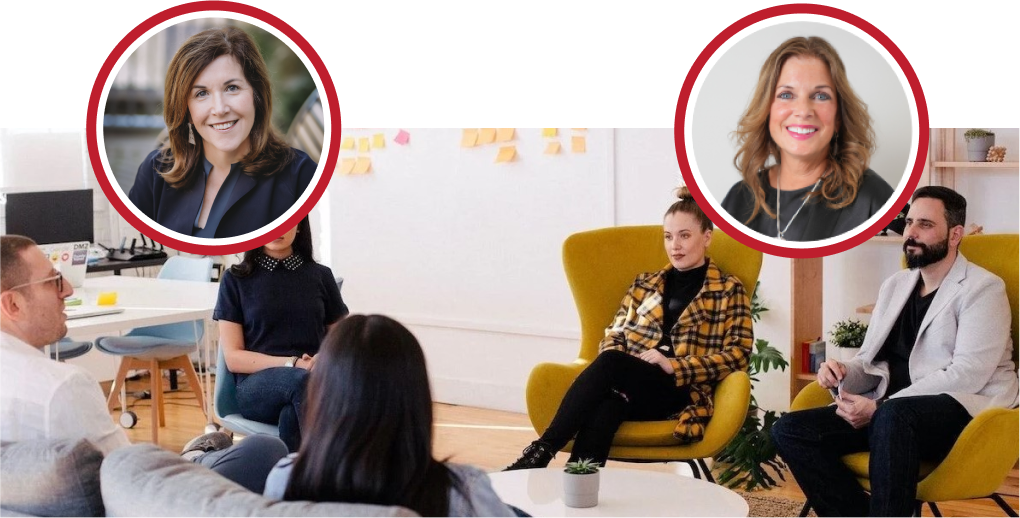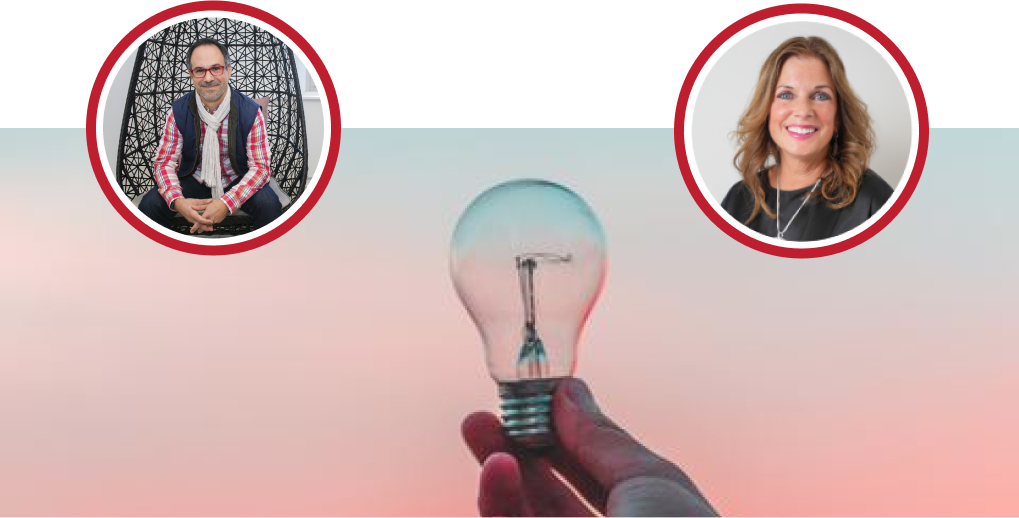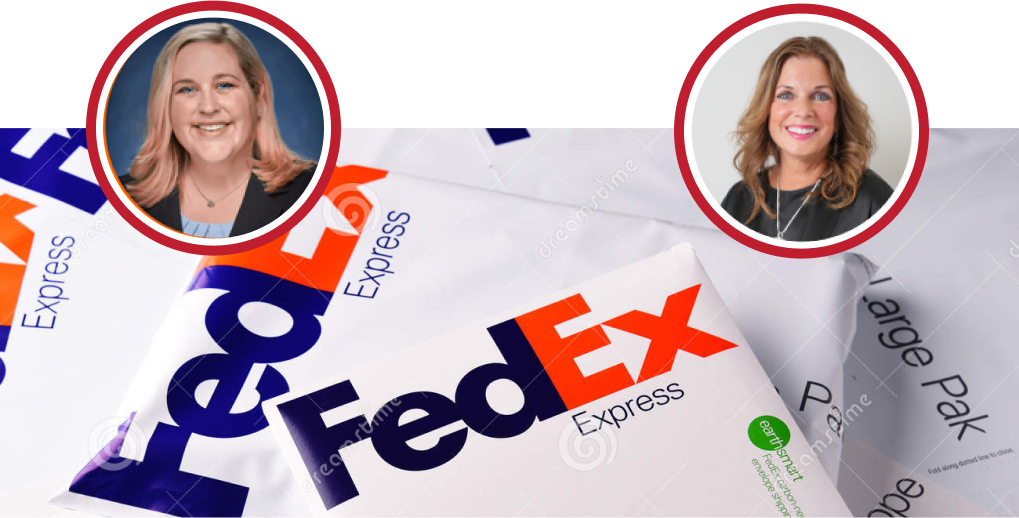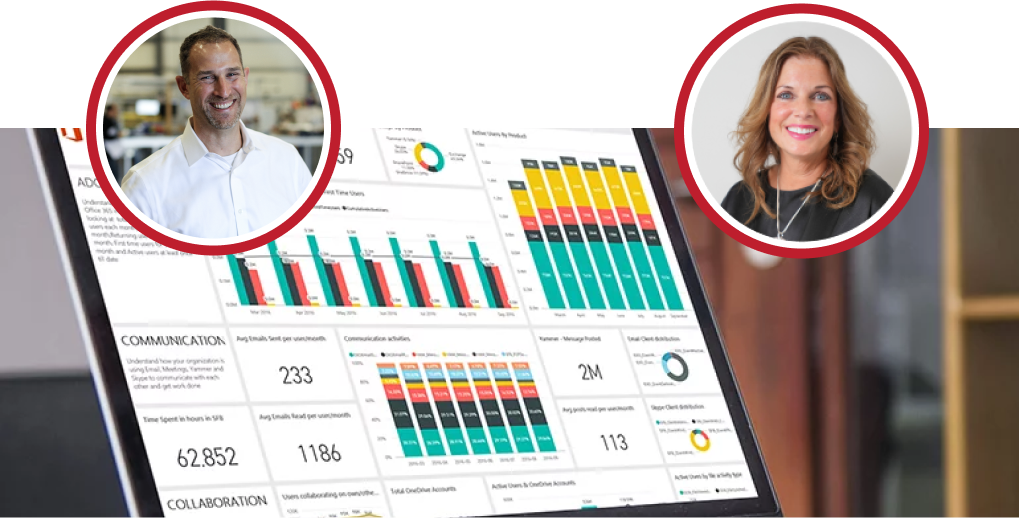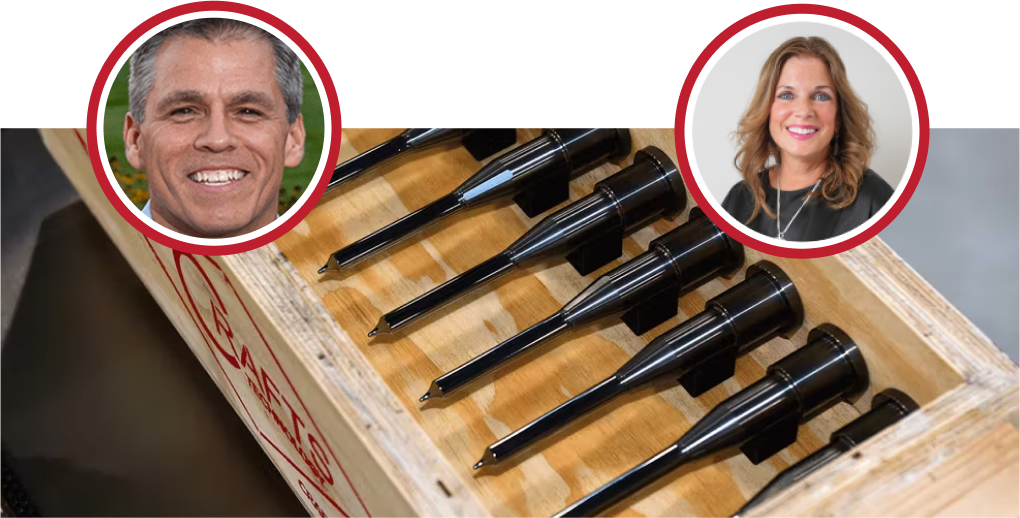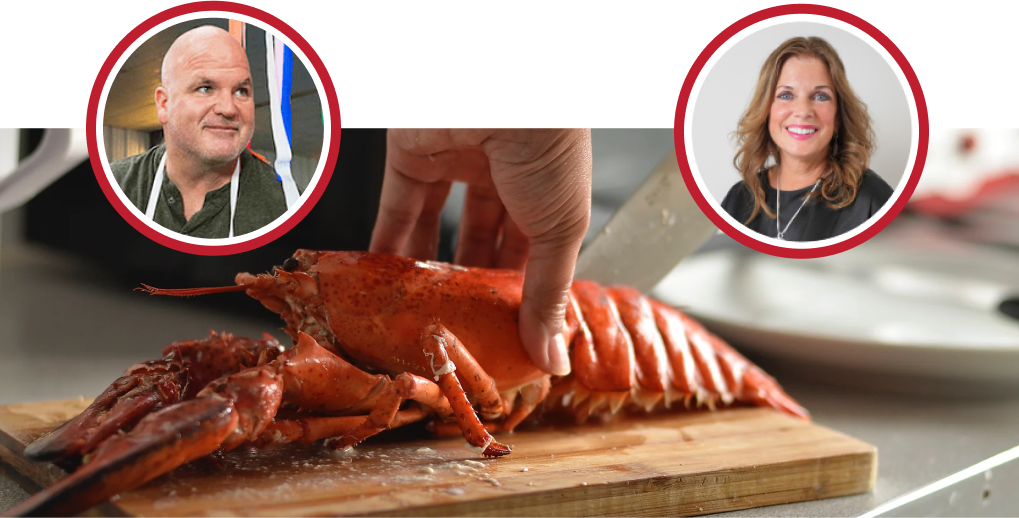Lisa: Please get ready to listen in and learn so much more about customer advocacy, how to use your NPS score and how to really harness your brand ambassadors, your customers, for the betterment of your organization. We’ll go ahead here and make sure that we have our friends joining us from our Facebook and LinkedIn audiences. So, give us one moment while we get that pulled up here as well. Kathy and Patrick, I hope you’re ready to go here. So, let’s go ahead and get started. So, again welcome everyone for joining us on today’s “Business As Unusual“ webinar, where we are speaking with Badass Industry leaders who are helping us survive and thrive in today’s economic climate. My name is Lisa Behning, I’m an Account Director at Red Caffeine, and I’ll be your moderator for today’s session. We are so excited to have Kathy Steele, CEO of Red Caffeine, as well as Patrick Rooney, CEO of Seventh Echo, joining us for today’s session. Now, if you haven’t met Patrick, one of the things that you should know about him is he’s a constant innovator, and when you think through things, he really focuses on business transformation, how to capitalize on market opportunities and how to scale companies, so we’re going to cover that all-in today’s webinar as we dive into the holy grail which is how to harness your customers and their brand advocacy the best for your business. So, some of the key themes you’re going to be hearing during today’s webinar are what defines customer advocacy? What is the difference between an advisory board versus a roundtable? And also, what do you do with that NPS score? Your net promoter score. There are so many intricacies to having a great customer experience and harnessing the value of your customers and how they’re saying things, so we’re excited to have Patrick dive into those with us today; we also want to give a shout-out to all of our 20 Grub hub gift card winners so the first five people who register any of our Business As Unusual webinars receive a voucher from us to support one of their local restaurants in their area as we continue to go through 2019, 2020, and now 2021 COVID-19 pandemic. It’s a great way to support your local businesses. So, a shout-out to Diane, Philip K, Mike K, Margot C, and Tracy T. You should have received emails from us yesterday with the activation instructions for your gift card; if not, go ahead and reach out to us; they’re still the valid end of today. So, with that, I’d like to go ahead and officially get this webinar started and welcome Kathy and Patrick to the floor. So, good afternoon to both of you.
Kathy: Thanks Lisa, so Patrick; thank you so much for joining us. This is a definite close-to-my-heart topic, but let’s just start with you; like tell us a little bit about your career journey and, really, how you became an expert on customer advocacy?
Patrick: Well, thank you, Kathy. I’m excited and honored to be here I’m looking forward to this conversation when I think of the arc of my career I’ve been involved in advocacy in some way shape or form for 25 years or so and I’ve long been really interested in what influences people’s decisions right what shapes their perceptions and ultimately their buying behaviors especially as it relates to business over the years it’s my interest has evolved from what influences big enterprise technology like, like the analysts from Gartner and Forester to how consumer word of mouth shapes our everyday perceptions and purchasing decisions through social media to employee advocacy and how it impacts and shapes an organization’s employer brand and its ability to attract new talent to cultivating customers to share their experiences not only with their peers and their colleagues but also their experience sharing their experiences with the company, so it can continue to improve how it does what it does and so I think all of these can be considered under a broader tent of advocacy and I think a lot of companies struggle with some of these, so I’ve spent a lot of time over the years working with organizations to shape how they can organize and engineer if you will advocacy because it just doesn’t happen right case studies don’t just happen right it’s a result of all of the things that you did right to get you to the point where you have advocates. So, I created Seventh Echo after my last company was acquired, which was an employee advocacy platform. I became the Chief Marketing Officer of the new organization, which brought seven different companies together, and my job was excused to me figure out how to organize these new offering and take it to market. So, I started by listening to customers to better understand what their needs were and get their guidance about how we could uniquely meet their needs with what we had. I then served as a transitional CMO at a startup where what I found a lot of people struggle with that is finding case studies and testimonials and references even though we had a lot of happy customers, and this is not a new challenge, right? It’s something that I think most companies are challenged with, and what I realized was that I had always been focused on the outcomes of advocacy rather than how to build sustainable advocacy, so throughout all of those experiences, I built a methodology around advocacy which ultimately led to 7th deco and the focus on helping companies create cultivate and activate advocates, so I’m thrilled to be here today and really looking forward to a fun conversation.
Kathy: Yeah! Well, I’m glad I broadened the topic to employee advocacy as well. So, I think there are definitely some lessons to be learned that can be both parts of your growth with customers but as well with retention and engagement of your staff, it’s a huge market issue today. So, well, let’s step in. I think where we always like to start it for us; it’s how does this topic fit into an organization’s best opportunity for growth, and really to me, this nests well into the organic growth a lot of times when we start working with an organization they’re really focused on new business, and it’s always exciting to add a new logo to your roster and work with a new client what’s less it’s less sexy I think sometimes is the growth of your existing account base, but I mean those are your best sources of leveling your top-line revenue up, so I’m so excited that you’re going to be able to help us better understand why this is s such an important focus for businesses and really how it does factor into an organization’s overall growth strategy. So, let’s kind of start at the highest of levels, and help us define customer advocacy because I think there are a lot of thoughts on what this really means.
Patrick: Yeah, well, it’s interesting as you look at the matrix that is all the grid of all the things that you’re talking about customer advocacy or employee advocacy can fit into nearly all of those things, and I think that’s why such, why advocacy has become such a focal point for a lot of organizations right because if you think about where we’re at in our moment of time we really are in the living in the era of advocacy and there’s been a ton of research that, that underscores the potency and the importance of people sharing their stories right. So, there’s a lot of research around like 92 percent of people trust a recommendation of a friend or a trusted source over marketing right customers customer stories carry more weight because, look, we want to hear from people like us and in a business setting you think about customers in business they want to hear from if they’re thinking about a purchase they want to hear from people who have been in their shoes and have been trying to resolve problems successfully that they’re trying to resolve, and we can think of that in our everyday life right look who of us hasn’t been on Amazon, and we look at the reviews, and so that’s just I think that’s a microcosm of the end of a larger, of a larger focus on advocacy right because it impacts what we purchase. So, what goes into advocacy, right what is advocacy, right that’s a good question and so what I would do is ask all of us on this call right now just take five seconds to think about what advocacy means to you when you think of customer advocacy in your mind’s eye? What does that mean?
Kathy: Gosh, Lisa, what do you think? Because I go right to, I think it’s about people feeling really good about the things that we’re doing together when we’re collaborating with our clients; they’re as excited about how where we’re at and how we’re doing things.
Lisa: I think, when I hear advocacy, I think of the book the raving fan or someone being so pleased with whatever’s happening that they just have to tell someone else about it.
Patrick: Yeah, I think that’s exactly right, and I think that’s what most people would say most people would say people sharing their stories, and people making recommendations and in a business setting its it is references and referrals and case studies and so on and so forth and all of those are right, but I approach customer advocacy a little bit differently, and I would encourage you to maybe expand on that definition because the question is how do you get there right how do you get to advocacy how do you get to customer advocates, and it certainly involves the outcome involves all the things we’ve just talked about, but I think it’s something larger and more fulsome and the way I like to think of it is how is it that we can cultivate and activate customers to help us drive revenue growth right what is it that actually goes into making those advocates right and then how can we harness that right in a way that is useful for them and for us right because this is important because there’s no better or more credible source of truth for your company than your customers. So, advocacy is about creating the experiences that lead to customers that are so happy that they will advocate on your behalf, and this is really important; if we go to the next slide, this is really important because it can have a dramatic impact on performance right companies that nurture advocates outperform competitors by 85 in sales growth they have a higher customer satisfaction rate and significantly reduced churn and so this is one study out of Harvard right that says a 12 growth in customer advocacy leads to a 200 percent growth in revenue, which I mean that’s astronomical that’s crazy. So, let’s think about cutting that in half; right really, 12 increases in advocacy leads to 100 growth in revenue. I mean, you’re still doubling your revenue, yes, and there’s a lot of, so you can look it’s hard to miss facts if you google facts about advocacy right advocates are five times more valuable right because they spend more and more often they’re more loyal and more profitable than non-advocates right, if they are there it’s less expensive to retain customers and advocates than it is to acquire new customers and so there are a lot of business reasons to focus on customer advocates because it’s not just advocates or advocacy for the sake of advocacy but rather how is it that we can leverage advocacy to help drive business performance.
Kathy: Yeah, I mean, I think it’s, for all those things you mentioned and a lot of times those are really hard things to tangibly measure, especially if you’re, like the cost of acquisition of a customer and how that reduces if you’re, selling more to somebody that you’re already working with, but those are pretty tough metrics to measure so is there any insight on to like how that that that data point breaks down when from that Harvard Business Review the 200 percent were they were figuring just the increase in purchases or were they really considering all those factors you mentioned?
Patrick: I think I don’t have the figures at hand but what I can say is that revenue growth comes in a lot of different forms; right, it comes in references and referrals; it comes from organic growth with your current customer base; it comes from direct word of mouth right. So, I think that there are a lot of different metrics that you would, you can assign to or attach to advocacy that can lead to revenue, and I think that it’s really, again, I’ll say this a lot, it’s the perfect consultant answer it depends right it depends on what programs you have in place, and it depends on your approach to it, and it depends. So, it depends on a lot of different things, but I think the point is that advocacy, at one point, was this thing of look we want, we want people to talk about us, we want word of mouth, and that was good enough right we could track, and we could see that in social media, but now we have the ability to actually tie a direct link between advocacy and outcome and that’s really important to note.
Kathy: Yeah, I mean, it’s critically important to see those social signals of endorsement. I know, for me, that’s, it factors into a lot of things I purchase. I do think it’s customarily viewed in the B2C space, but I think we’re seeing more of it leveraged in B2B. So, tell us, we love processes; we love systems. So, how do you actually go about creating a scalable advocacy program?
Patrick: Yeah, I would say in addition to scalable, I would say sustainable as well, and I think that’s the million-dollar question, and when you think about advocacy, right as we talked about, a lot of people think about advocacy as a word of mouth or case studies or testimonials voice of the customer stuff right, but the question is what how do you get there so much of the work happens before you have somebody shouting from the mountaintop right the proverbial mountaintop. So, the question is how do you go about building a foundation to create, cultivate and identify advocates, and it really starts with listening. So, why don’t we go to the next slide? And to find advocates, you have to start it starts with asking questions that reveal a lot about where you’re at with your customers, what it is that you offer, the value that you deliver and what’s emerging right what’s coming around the corner and especially now that so many things have changed right I mean in the last 18 months I think everybody’s, I would be surprised actually let’s go back one if we could yeah there we go, so I would be surprised if anybody’s business on this call hasn’t changed right if their needs haven’t changed over the last 18 months right. Covid kind of threw everything into up in the air right and everybody’s needs and requirements changed their business realities changed and so as you think about the market that you were serving do you still know it right every company in the world is developed or created because they see an opportunity in a market right they know a market they see an opportunity in a market they see a way to fill that but are those business realities the same right or how have they changed, and it’s really important to really understand what that is and get insight into how they’ve changed and guidance on how you can better [Music] serve it and so when I think about that right there are two there are two things that that that are very powerful tools that any company can use the first is and when we go to the next slide the first is an executive roundtable, and until about a year ago I would have thought my definition of executive roundtable was you got a bunch of executives together to kind of talk about you right, and it was a little bit of a schmooze thing, and it was more of a kind of marketing type thing, but I was in working with a client of mine we had actually started out to develop a customer advisory board which I’ll talk about in a second, but as we were tight as we were looking at the customer advisory board covet hit, and it just wasn’t the right time to do this however what we did do was pull customers together and invite them to really a round table to talk about the things that they were facing right what challenges are you facing because there was no there was no precedent for this right and there was no playbook for how organizations were going to approach and manage covid and so the opportunity was to invite them together and just create open space for them to talk right so facilitate the discussion look you’re all our customers right you have commonalities you have common challenges so let’s talk about that, and it wasn’t really about Equilibria it was equilibria facilitating the discussion and the upshot of that was that equilibria the organs the company was able to listen in to their customers as they talked about the challenges they were facing and about the solutions that they were developing right, and it gave them just such valuable insight into their customers, so again it wasn’t about equilibria it was about their customers, but equilibria just simply said hey, come together, and we’ll facilitate the conversation yeah, so sorry, go ahead.
Kathy: I think we found an opportunity it wasn’t quite as constructed as, but working with a lot of manufacturers early stage of the pandemic and just being able to share learning across what these essential workers or these essential businesses were doing to protect their employees, and to ensure their workforce was going to be safe I mean it was just unbelievable the amount of information that we were able to collect and share amongst a group of people quickly, and it was not really the benefit of our organization we just really facilitated that information, and I believe that really stuck for our customers is it wasn’t a business thing it was really just trying to be helpful to be learned this at one client how can we give you that information to help you level up. So, you don’t have to figure it out on your own.
Patrick: And, there’s great value in that, right it. So, it may not have been a business thing, but it had business implications and outcomes right and so for from equilibria right we had two groups of companies, and they were largely fortune companies, and there were six meetings each and what this as I said what this provided was this unvarnished direct insight into the minds of what the customers were facing and how they were approaching the solutions to them which from a product and a services’ perspective I mean what great primary research right but just setting the table and providing that space without trying to sell them but just saying hey let’s get together you guys can talk about it, and we’ll facilitate it in a structured way there was great halo benefit to the organization that ultimately amongst the participants their net promoter score increased by 30 percent again this was a passive activity right that provided value to their clients but ultimately also provided value to equilibria, yeah.
Kathy: I love that you were able to even measure the impact. That’s really impressive.
Patrick: So, as I talk about right setting the table for guidance, I mean that is literally setting the table for guidance and helping customers help themselves with the focus on the right. That’s one way of going about getting that insight. If we go to the next slide, a more direct approach is a customer advisory board, and this is, this is similar to a round table right you’re inviting customers into a discussion, but this is really focused on you as the organization and how is it that you can pull them together to help you get better at what you do and that’s their mandate right. The mandate of a customer advisory board is to help you improve across all facets of your organization, and a customer advisory board typically is consists of between 10 and 15 customers with a mix of profiles some happy some maybe not so happy it’s the customer advisory board really is your customer board of directors, and you want versatility and the perspectives that you’re going to receive right because if all you have are happy customers on there what are you going to learn about the people that aren’t happy right you already know they’re happy but again like the round table this is focused on helping you get insight and guidance and direction into how you can improve the customer experience right from the sales and marketing perspective from the product perspective from implementation from customer success right across the board the customer advisory group is tasked with helping you and so after is the same client following the series of executive route tables we did convene a customer advisory board that meets on a quarterly basis and each of the customer advisory board meetings focuses on a different topic right one meeting will be focused on product and really deep dive into that one will be focused on their data or support or market trends right one of the one of the things that we want from a customer advisory board is to understand what’s happening with us how we can improve what we’re doing, but it’s also to get guidance and their insight into market trends and what’s happened what they see happening in the market? And how their needs are evolving? And what is their strategy for the next year? So, that equilibria can evolve to help with that.
Kathy: Yeah, I mean, I love both these. It kind of comes to mind how some organizations use user conferences or things where they’re able to get a lot of collective data, but I have to imagine that there’s a little bit of fear whenever you’re like going to open the kimono and get your customers into a room has there been any challenges. How do you overcome those types of objectives? When you’re thinking about setting up something that is going to put you in a bit of a vulnerable state as an organization?
Patrick: Sure, there is some of that, and I think the answer to that looks you need customer you need insight into your customer needs and asking a customer advisory board to convene to help you get better at what you do there is an element of fearless listening involved right because who of us likes to hear bad news which of us nobody likes to hear that their babies are ugly, and it’s not that right it is it’s a productive, constructive conversation with the understanding that look you’re here to help us get better we value your voice, and we value your expertise. So, help us get better it’s not , a customer advisory board or these conversations are not, it’s not an opportunity just to throw mud right as a matter of fact not just its, not an opportunity to throw mud right that’s not why we’re there and part of that is the moderation and the setup of it right being very clear on what you want and articulating that to the clients there’s also oftentimes there’s also a concern about well what if why would the customers do this why would they participate right what’s in it for them which is a great it’s a great question right because what’s in it for them is the whiff if you will, is multiple one is there’s no underestimating you appeal to ego right everybody loves to be asked for their opinion and everybody loves to be asked to write for their help or most people do rather so there is that there’s also the opportunity to network with their peers right I mean we all from a professional standpoint I mean that is so important for us and the ability especially around folks who have common challenges right around a product or a service the ability to o network with your peers is huge also the ability to impact the direction of the product or service right to meet frankly your own needs is pretty powerful right. So, there are Beer in the wife arms the what’s in it for me goes on right, but I think the point is that the level of fear and uncertainty in convening the cab I think can be overcome with understanding what a cab is and what a cab is not, and a lot of it goes into how you structure it, so you see here five steps to success and I think that at the out at the outset it’s really important to understand what it is that you want from the customer advisory board right it’s not just we want to get a bunch of customers together to talk right that’s not it is we want customers to help us achieve x y and z right we want to be very deliberate about what it is that we want so that we can set objectives to it, we can put metrics around it, and then we can create a plan and part of this is an important note on this is it’s important to involve the entire organization on this right because a customer advisory board is going to touch on the entire organization it’s not a marketing thing right it’s it is about giving feedback and guidance on everything that you do and so it’s going to impact your the entire organization so understanding what product wants and needs from a cab what sales and marketing wants and needs from a cab what customer success so on and so forth you need to understand what they need? How do they want the feedback, right? What they’re going to do with it? You need to understand all of those things. So, that one everybody can get aligned, and then you can create a plan that meets all of those needs; otherwise, how can you possibly meet the needs of a product or service if you don’t have they have their buy-in.
Kathy: Yeah, I mean, I honestly just absolutely love these ideas. I think, we do a lot of up-front work and strategy with customer feedback on behalf of our clients, but it’s hard to keep that sticky factor and to your point it’s hard sometimes to even get , the good input that really looks at the cross-section of how you’re delivering in a lot of different departments, so I just I mean you don’t know what you don’t know and if you don’t ask you can’t improve and I this is just super powerful to me in terms of the outcomes that you can have if you’re really co-creating solutions with your customers and employees I mean I think that’s like the beauty of the whole thing just I love that tied that thread up around pulling in different people that represent the organization, so it’s not just a senior leader hearing this and saying yeah the customers say you’re not doing a good job they’re getting to participate in these conversations so well thank you I know we want to switch gears because I know we want to talk a little bit about net promoter scores, and the impact those can have beyond just an beer, so let’s switch gears and like first just for not everybody is familiar with net promoter scores. So, can you set the table as to what that is? And then you can step into some of the reasons why it’s so important?
Patrick: Sure. So, net promoter score really is a way to measure an organization’s health right the health of the business and very simply it is, and we’ve all done this, and we all do it every week, or we’re asked to do it every week on a scale of one to ten how likely are you to recommend us and based on those scores in aggregate right you can get a really good understanding of who your advocates are which are nine and ten and who’s your passives are but then who your detractors are which is seven and below, and so I’ll dive a little bit more into NPS in a second about kind of how it goes, but I think even more broadly it’s whether you use NPS or another tool or another approach I think it’s so you’s really important to once you’ve set the foundation right for customer advocacy you have your round tables you have your advisory board you have your insight and guidance into and your product or service how you’re taking that to market how you’re delivering it how you’re supporting it all of those things right and those are improving because you have the guidance and input of your customers so as you continue to do that you’re going to get more and more happy customers right so now that you’ve built your foundation how is it that you find your customers and how is that you flag your detractors right because there’s with one comes the other and so you want to find your advocates to tell your story, but you also want to find your flag your detractors because they represent revenue at risk right and so o you we use the net promoter score as a as a tool to do this and when when you think about net promoter score a lot of organizations have NPS a lot of companies use it and which is great I’m thrilled to see that the challenge that a lot of companies have is that they don’t they’re only looking at the n beer right they’re only looking at we’re at a 35, or we’re at a 10, or we’re at a minus 15, or we’ve grown five percent all of which is great but if you’re only looking at the Ber then you’re leaving the lion’s share of value right all of that that juicy gooey stuff right that makes it good that you’re leaving that on the table because while the Ber is important what’s even more important is finding those advocates right so all those folks that have a nine or ten finding them and asking them to be an advocate right activating them right because somebody may be a 9 or 10, and they may love you because look if you’re giving somebody a 90 which is an a or an plus then they must really like you and if they really like your chances are that they will be a case study or a reference or a testimonial, or they’ll share content or whatever it is right they’re they’ll share their story in some way shape or form which is what you want and that is great because as we talked about right there’s no more powerful or credible voice than your advocates what’s even more I think useful and valuable in the NPS is finding those detractors’ anybody that is is a seven or under those are people who frankly may not be super thrilled with you right thing about it, you’re getting a c or less on that and that represents people that are not happy, and maybe , open to going somewhere else and which represents revenue at risk and so let’s put it in context right. So, you have revenue or risk, and you have, let’s say, you’re planning for 2022, and your sales target for your sales growth is 20. If you have ten churn right, ten customers or revenue churn, you’re actually starting out at a deficit, and you’re you actually have to grow 30 right your sales to make up for that deficit. So, if you can, if you can move detractors even five percent right then that’s that represents a significant gain in in your revenue target right you’re that much closer to your revenue target, and frankly there are some detractors that you’re just not going to be able to save right for whatever reason, but there are a lot of people in the five to seven range that just want to be acknowledged they want to be heard, or they have a challenge at a moment in time right that that can be if you acknowledge them and reach out to them then they can actually be moved to an advocate, and I’ve seen this time and again and if you can actually move a detractor from if you can move a customer from detractor to advocate they’ll actually be a much more powerful advocate and far more loyal because you listened to them and fixed whatever it is that they were challenged with and so NPS goes far beyond just right it finds your advocates it flags revenue at risk it’s an indicator of business health, but it also helps you to understand overall client satisfaction while gaining insight into areas of improvement because what you want to what you want from your detractors is to address their challenges, but you also want to get their feedback on what they’re unhappy with and then feed that to the rest of the organization where appropriate.
Kathy: Patrick, can I ask you to just give a couple of examples of just how do you go about addressing detractors? What are some of the things that you’ve done or tactics that you’ve used?
Patrick: Actually, if you go to the next slide that’s a that’s a great segue thank you, Kathy that’s a great segue and so the process really it’s pretty straightforward process right the NPS survey goes out you get it back, and you evaluate kind of see who’s, where people where folks are and then it’s really important to have a process in place for communicating any detractors right so whether that’s going to an account rep or a customer service or customer success manager and having a process a formal process for them to reach out and just ask the question right I see that you see that you responded I would love to understand kind of what’s going on and how we can help I mean truly it is as simple as kind of putting just charting out a process and then almost even giving a script to the cs team or whoever it is that’s going to be reaching out giving the script giving them a little bit of training help with role playing but reaching out and getting that feedback but what’s really important is once you get that feedback you need to channel it to the right department right to the right place in the organization for them to evaluate and determine what they’re going to do with it, and sometimes it’s you don’t do anything with it right and that’s okay right, but then it’s important then to close the communication loop right the feedback loop with the customers right to tell them look we heard you here’s what we’re doing yeah here’s what we’re doing about it even if it’s nothing, and it doesn’t have to be that sounds daunting I know, and it doesn’t have to be on an individual basis it could be with more severe, but it could also be on an aggregate right so on a monthly or quarterly basis thanks so much for everybody’s feedback here’s what we heard here’s what we’re doing about it the key there though is to create a process right that is inculcated throughout the organization which, if done actually represents a step toward becoming a more customer-focused organization right, which is what you want and a customer-focused organization is much more likely to have customer advocates than not.
Kathy: Yeah, and, I think again, just creating a system for it to be a scalable process now this seems a lot more like of a one-to-one where you’re actually physically calling somebody, but it is not as commonplace in B2B, but it’s getting more commonplace in B2B, but it’s certainly very common in B2C. What if the feedback is in the public domain? Where, what is your recommendation for responding to those types of situations?
Patrick: Classic consultant answer. It depends on what the comment is, what the feedback is; it depends on what the for is; however, what you do want to do, what you don’t want to do is leave it, respond to right oftentimes, what works is thank you so much for your comment thank you for your feedback we would love to learn more where can we how can we contact you right and so acknowledge it in the public domain and then take it offline.
Kathy: Yeah, no, I mean, I agree. I 100% agree with positive and negative feedback; I even feel like there’s an opportunity if you get enough data to ideate gaps in your service offering or product offering to use that information to elevate how you serve customers, not just trying to resurrect a relationship but how do create a more valuable offering based on the feedback from sources. So, thank you that that was really helpful. So, it is in terms of impact, can I think you’re going to talk us through some real, meaningful data points around the financial impact.
Patrick: I am and so before we get to that why don’t we go to the next slide because when we think about we think about all right well we have created the foundation for customer advocacy right we have the guidance and to help us improve how we do what we do and that has led to happy customers and happy customers that we have identified advocates from what did we do with them and one of the challenges that a lot of organizations have is they have happy customers, but you go to ask them for a case study, or you go to ask them for a testimonial, and they’re like yeah I can’t do that and that’s a real challenge that that’s a that is a real challenge and so there are ways to I think handle that, and I don’t want to say get around it but how to approach it in a way that could yield better results and if you at least if you just click on the next a lot of organizations don’t understand what you’re really asking for when you’re asking for a case study right or a testimonial right and so make it a win-win right if you’re asking for something let them know that there’s something in it for them as well and so call it so let’s take a case study for example right case studies are often flagged by legal or procurement as as a no-go however if you approach it not as a case study but look we would love to we love the work that you’ve done and the work that we’ve done together we would love to do an executive s Mary on it so that you can merchandise that in with your team and internally to showcase the success you’ve had and by the way our we would love to show this to customers people would love to tell your story right people I think would be we get a lot out of it right what it it’s a rose is a rose right, but it’s all in the approach so framing it as a what’s in it for them right what we’re wanting to do is showcase your success right underscore the light lifting as much as we can take off their plate and make it as turnkey as possible right the better because everybody is busier than ever and so if we can make it super simple for them to participate all the better and just keep it super simple right it doesn’t have to be long and drawn out right one other thing that I will share before we move on is one of the biggest challenges that from a sales perspective that a lot of organizations have that touches on marketing are references right because look every organization needs references and most prospects want to talk to somebody who right has solved a problem similar to theirs successfully, and they want insight into well before I write a check I want to know right from somebody who’s been there the challenge with most organizations is that they only have a handful of references right four or five references that are always a go-to for the sales team right the sales team always wants to talk to them and if that’s the case then in all likelihood those references are going to fatigue right they’re going to burn out and that’s I mean that is a real challenge and one of the ways that we’ve been able to address that is to take those references and record them, and create a video reference where you interview a customer around a handful of frequently asked questions, and then you splice that up into smaller segments around why did you choose to start working with Red Caffeine what impact did they have what was the best part of working with them, so on and so forth, and if you can go back to your four or five references and ask those questions then you have a video library of references that you can point prospects to, and you’re not going to burn them out.
Kathy: I love that idea, yeah, because it is very commonplace, I think for all organizations to kind of go fishing and the same well, and it does you feel bad you don’t want to keep asking the same people to advocate for you and me also the real challenge of getting somebody to endorse you so making things simple giving them some starting points and then really I too think framing what you’re looking for from them, so you’re getting the right you’re getting the testimonial that you actually really need it is also an important factor so on some really good actionable ideas that I think any business could leverage as they walk away from today. So, tell us a bit more about the finance piece of these outcomes?
Patrick: Yeah, so one of the challenges that early on I had was quantifying the impact of advocacy right and in social media early social media it was we worked with unsilver and conacre and Frito-Lay around their social media marketing, and in presenting to the CMO’s right what they were getting for their million dollars return on engagement really wasn’t cutting it, and I bear the scars of those conversations and so that really ingrained in me this sense for tying advocacy in whatever form right whether that’s cons er advocacy through social media and word of mouth or employee advocacy or customer advocacy right so tying a direct link between your efforts and advocacy to tangible measurable business outcomes and so if you look at just NPS, and I’ll touch on this I am happy to go into other details I know we’re in that time but on NPS right say that you are dedicating 50 000 to your to your NPS program and that is whether that’s tools or that is fete or that is whatever resources breaking down looking at your total n Ber of customers and of those how many are promoters how many are passes how many are detractors and then getting to your net promoter score and then looking for each of those categories looking at the annual spend right the annual revenue so if you can so say that today you have an NPS of 63, and you focus on increasing that which means increasing your promoters and decreasing your detractors, and you can see here in the detractors on the fourth row today we’re at 11 in six months we’re at 10 we’ve only changed reduced detractors by one percent but the NPS went up by four points everything being equal that four point increase leads to 185 000 annual revenue increase right and your ROI then on your program then is is pretty respectable, and so this is this is certainly an example, but the point here is that there is a way to tie everything that you do in advocacy to measurable and tangible business outcomes.
Kathy: Yeah, no, and I mean, I appreciate that because I think we might have heard once or twice that social media wasn’t going to have an impact on a client’s business, so I know we’re getting close to time, but I’d love to see if there are any questions coming.
Lisa: So, one of the questions we had Patrick, and I think this was probably echoed by other individuals too, but maybe not; they’re not ready to share it, but if I’m a company that’s not currently tracking NPS, I’m not doing any advisory boards. Do you have like two or three tips to help me get started because this seems a little bit daunting to get going?
Patrick: I will say this, if I understand that it seems daunting, and it seems like a lot I will say this, and I have to remind myself of this every time I am overwhelmed by my work once I dive in and focus on it right everything kind of seems to fall in line and I would say you don’t have to do all of this all at once right as a matter of fact I would encourage you to take one of these initiatives and start it and then build from there , and starting with like with everything start with why you want to do it what is it that you want to get out of it right at the end of the day what is it that customer advocacy is going to help you with and start there net promoter score is a relatively straightforward thing to do in its simplest form you can send out a survey monkey with questions to your anonymously to your customers on a scale of one to ten how likely is it that you will recommend us that’s all you have to do and then a follow-on then could be if there’s anything that we could do to improve what would it be right that’s super simple, and you don’t right you don’t have to do much around that , and then you can build on that from a an executive roundtable or a customer advisory board I will say that the executive roundtable is also fairly straightforward it is it is really a function of identifying 10 customers to that you would like to invite around a topic and scheduling a meeting and starting the conversation with we’re here to talk about this is a challenge that you all face, and we would love to hear how you’re how you’re focused on it or tackling it that’s it and then moderate and then be there for the conversation it’s as simple as that, and and look it’s like any good sales conversation you’re just there to listen and to prod as necessary.
Lisa: Thank you, and I’m so glad the second question actually we had that came in as I’m watching the time here is actually about the customer advocacy in the executive boards knowing we still have the what’s in it for them, obviously important for them to be there have you ever seen or worked with a company that needed to incentivize people to take part in it free lunch gift cards anything like that just to help make sure people felt comfortable sharing their opinion.
Patrick: This is the easy answer is no, and I would not encourage incentivizing a customer advisory board. You want customers who are invested in you to participate. You don’t want them there because they’re getting a free something now; that’s not to say that you don’t structure it in a way that is fun for them or they to get schwag, or that it’s not to say that at all but rather right the slate of customers that you put together should be customers that or want to have a vested interest in your success.
Lisa: Perfect; thank you so much and looking at our time. Patrick, I’d love to move us too close to keep us in this one-hour piece; now I know there are so many of you out there watching, and I sometimes think just taking in the information, especially with what Patrick has shared with us today is so powerful that it takes a moment to digest so if you do think of things after the webinar, or you’re watching the recording of it you can reach out to Patrick we do have his LinkedIn information as well as his email on the slide, so he is open to hearing from you, we asked just put “Business As Unusual” in the subject line so that he knows you’re coming from the webinar. So, Patrick, thank you so much for spending this hour with us today walking us through this important information when it comes to really helping the company that helps us help you by utilizing your customers harnessing their power, and I think overall, just getting them excited even more so than they already are.
Patrick: Well, thanks for having me, Lisa, and Kathy. This has been fun.
Kathy: Yes, thank you so much, Patrick. We could talk for hours about this topic; it’s just so super interesting.
Lisa: Well, and I know we’ll touch on this in just a moment, but as we look ahead to our next “Business As Unusual” webinar, mark your calendar for November 18th. So, just one month away, we’re going to be talking about capital trends for 2022 with a dual-panel. So, we’re going to be speaking with Rae Ali, Chief People Officer legacy.com, and also Sean Helsel, Vice President of HR Resource at Union Tank Car Company. Now this combined panel is going to be covering topics such as how to think about your employee experience just as you would your customer experience. So, Patrick touched on some of those themes today with us actually thinking of new creative approaches to keeping employees and retaining your talent during this period now being dubbed the great resignation and then lastly uncovering opportunities for speed and agility in both recruitment and retention. So, really diving deep into the employee experience, which is also important as we’re hearing about this in the news every single day, so go to our website and register for this. We’ll also be live-streaming again through Facebook and zoom, so you can check that out there as well now, I mentioned a little bit about Patrick that you get to actually hear from him again, so I’d love Kathy for you to share more about our 2022 people plus people date which actually will be featuring Patrick as one of our speakers.
Kathy: Yeah, this is. We’ve announced a new date for the people plus people conference. It’s January 27th, 2022, and we’re really going to take a deep dive into all aspects of sales and marketing. We’re going to have Rob Johnson, a former TV personality, help us with presenting effectively on and off-screen we are going to bring in Doug Ferran from the national center for the middle market to showcase his they’ll just have released their report for growth planning in the mid-market for 2022 just it’ll be hot off the press at our event, and then really thinking about talent strategy to drive growth that as Lisa mentioned I think workforce is a challenge for all of our businesses today. So, how can you think about the workforce differently to drive your business impact so super excited you go to peoplepluspeopleconf.com to register, and we look forward to having a very interactive and engaging program?
Lisa: I’m excited too. As we launch the new year to be back in-person meeting all of our friends in new business contacts; these conferences have been so powerful in the past talking about customer advocacy great testimonials coming from these people who have instantly gone back to their business with 20 new things they wanted to implement immediately so come and learn and enjoy and grow with your fellow attendees if this was your first “Business As Unusual” webinar I hope you enjoyed it we look forward to having you on in November. So, again mark your calendar for our next session. If you’re curious how Red Caffeine and our growth consultancy approach can help you and your business grow to market, reach out to us at connecting rightcaffeine.com. So, on behalf of Kathy and Patrick, thank you so much for attending today, and we look forward to seeing you next month. Thanks so much.






